Nabat: Basic Information
Pronunciation
Alternative Name(s)
Dish Type
Course
Mealtime
Popular Variations
Nabat: Ingredients and Preparation
Main Ingredients
Main Cooking Method
Preparation Process
Nabat: A Deep Dive
Cultural Significance
Taste
Texture
Aroma
Color
Serving Style
Serving Temperature
Accompaniment
Occasions
Seasons
Special Diets
Calories
Popularity
Popular Similar Dishes
- Rock Sugar
- Misri
Popular Dining Area
Nabat is a traditional Iranian version of rock candy, a confection made by letting sugar syrup cool down into large crystals.
While rock sugar is popular in many other countries, nabat stands out from the rest since it contains saffron and, as a result, has a vibrant yellow color.
Nabat has been an important ingredient in Persian cuisine from time immemorial. Locals typically add it to black tea (chai), so nabat is also known as chai nabat.
This saffron-infused rock candy variety is regularly put on a stick or string and dipped in tea to sweeten the beverage.
Thanks to its beautiful appearance, nabat can be used as a decorative item for special occasions like Nowruz (Persian New Year) or weddings.
The practice of drinking tea with nabat is also well-known in Central Asia, including Kazakhstan, Kyrgyzstan, Tajikistan, Turkmenistan, and Uzbekistan. Nowruz is also a big holiday here, and locals call the rock sugar novvot.
Besides tea, this type of rock sugar is ideal for other herbal drinks.
Iranians believe nabat can relieve coughs, stomachaches, menstrual cramps, fevers, and other symptoms.
Keep on reading if you find nabat an interesting topic. I will delve into its major upsides, downsides, and common questions about this Iranian rock sugar. You will also learn about some similar foodstuffs as nabat.
Key Points
Nabat Images
Pros and Cons of Eating Nabat
Nabat consumption presents the following benefits and challenges.
Pros
Cons
After getting familiar with nabat, it’s time to address popular concerns about this Iranian rock sugar.


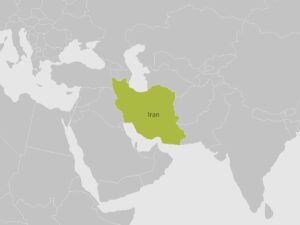

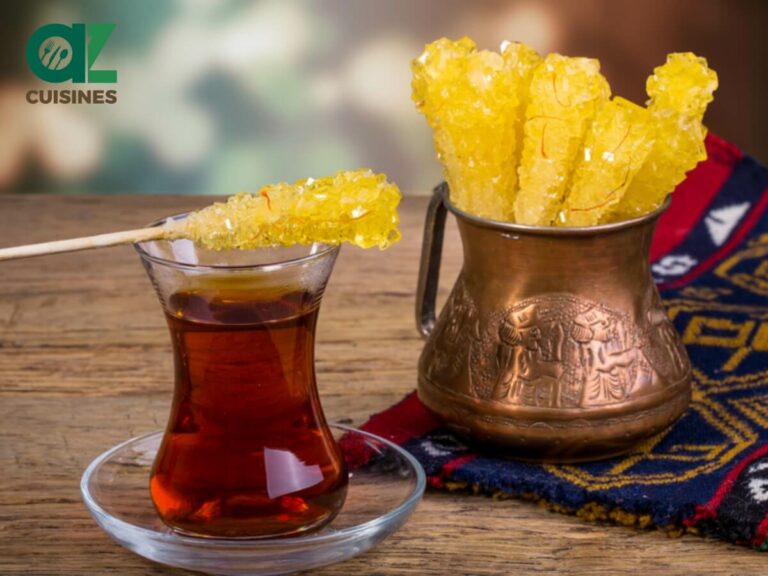
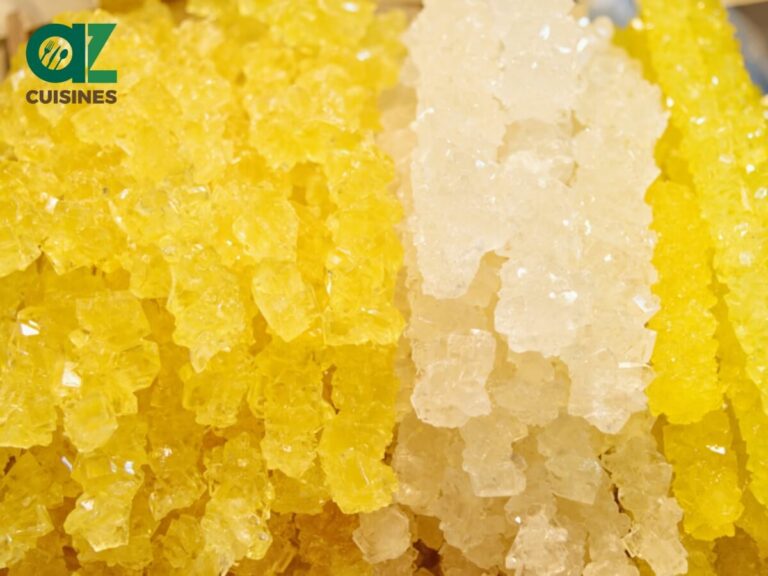
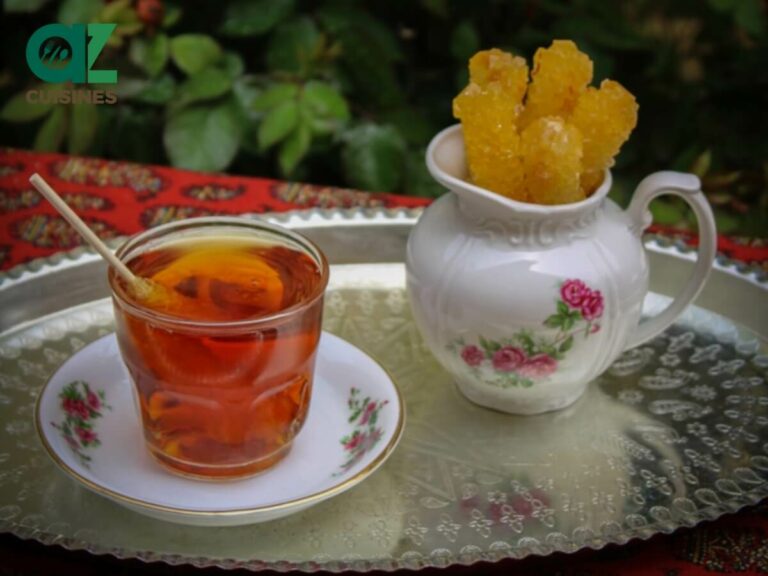
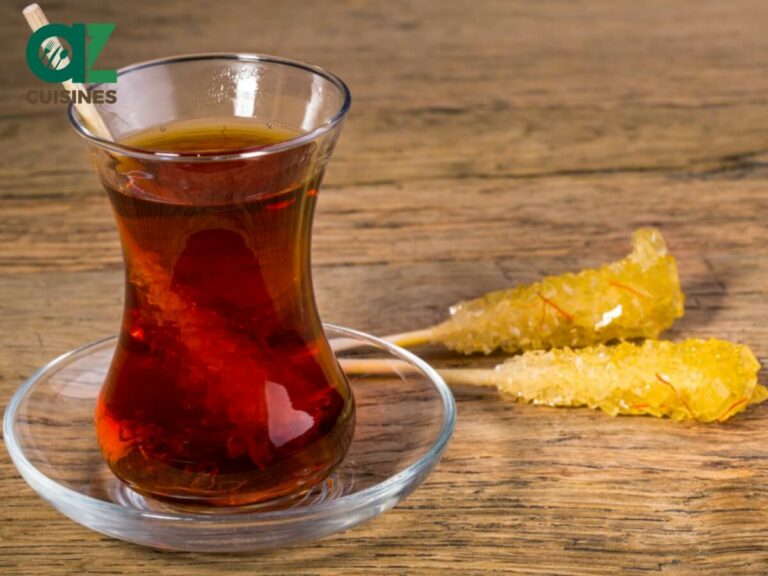
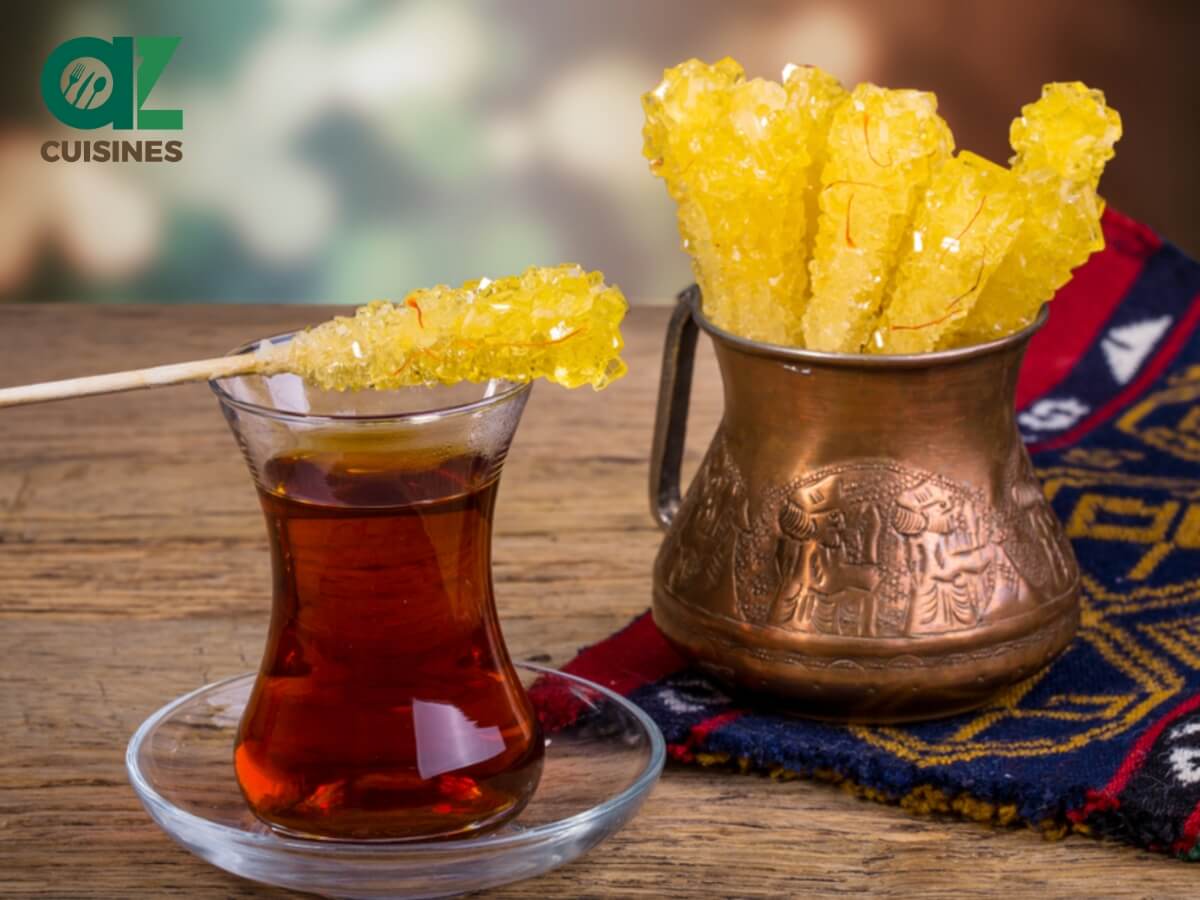
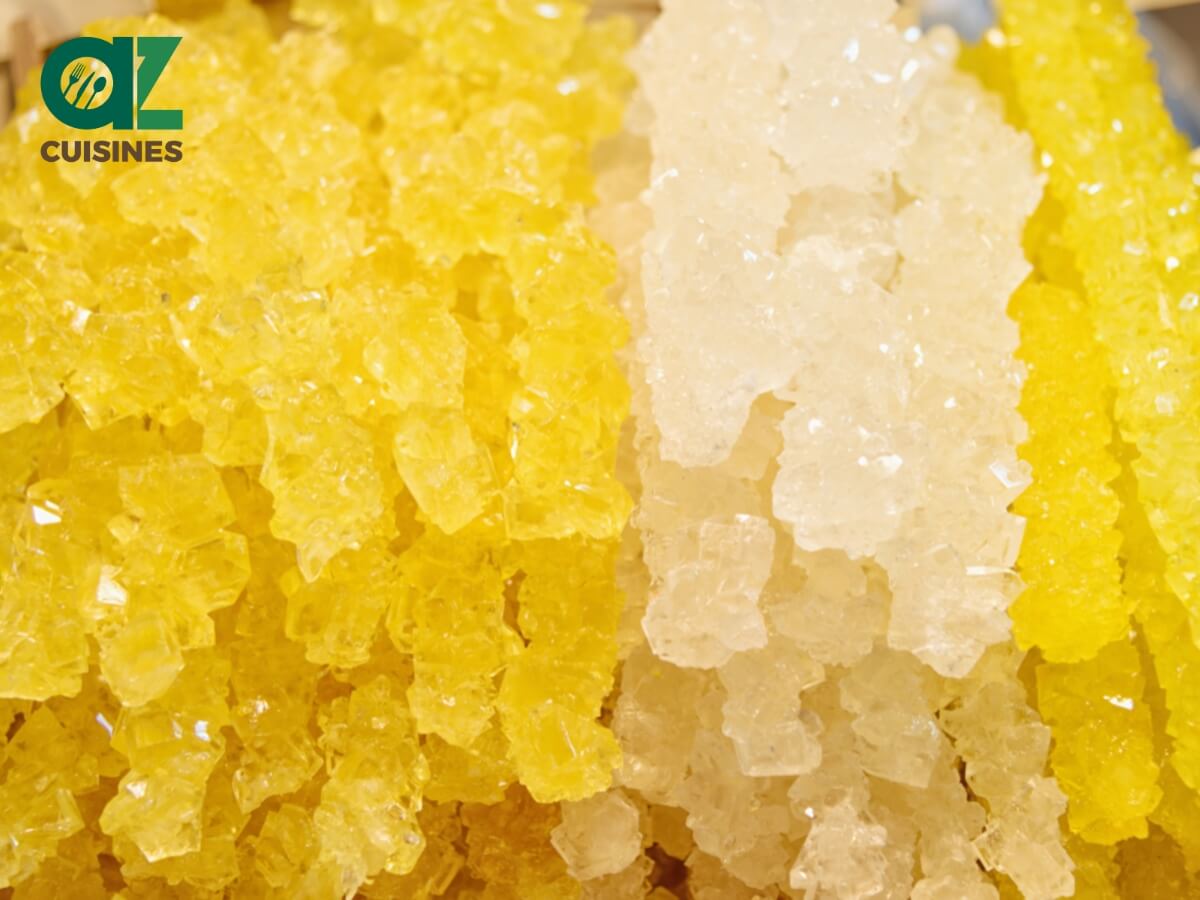
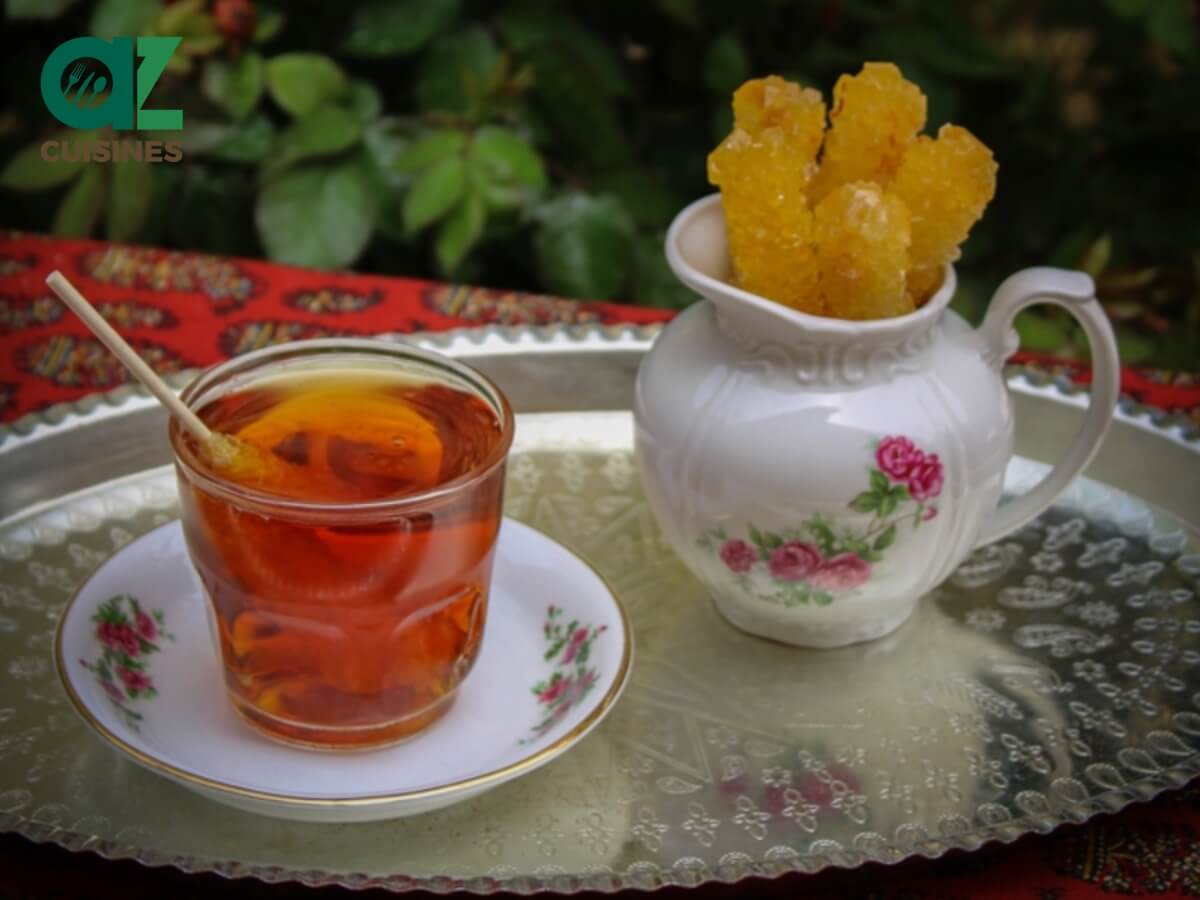
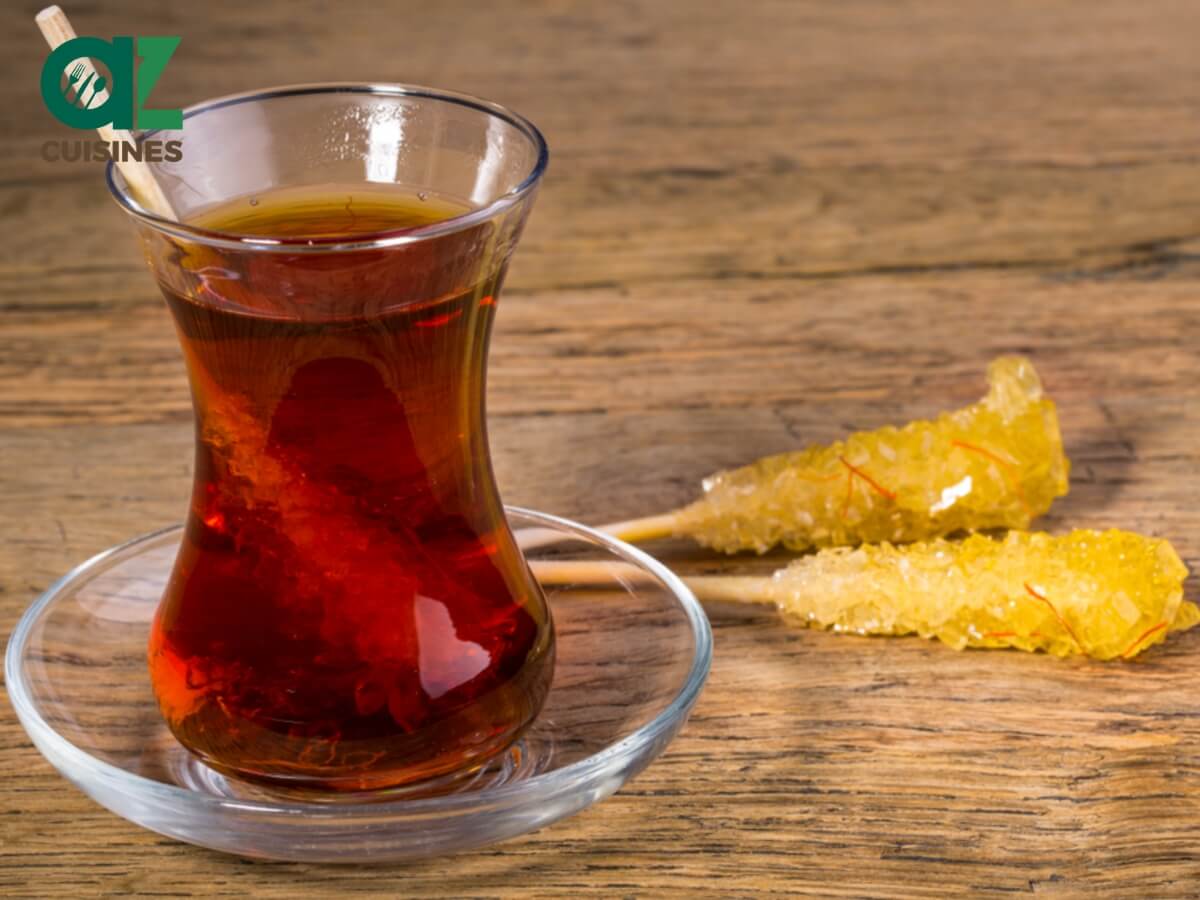
Adam Sam
Senior Food and Drink Editor
Expertise
Food Writer & Recipe Developer, Recipe Tester, Bartender, Cooking-video Maker, Editor In Chief
Education
Adam Sam, an experienced food writer and recipe developer, is passionate about blending diverse culinary traditions, national dishes, and innovative beverages, showcasing his proficiency in both traditional and modern recipe testing.
As the Editor-in-Chief, he elevates culinary content from street food to fine dining, focusing on Western cuisine and types of drinks at azcuisines.com, and is professional in creating engaging cooking videos that simplify complex dishes and ingredients.
His passion for food is evident in his writing, where he uniquely merges various cultures, traditions, and contemporary trends, skillfully combining classic recipes with modern cooking methods.